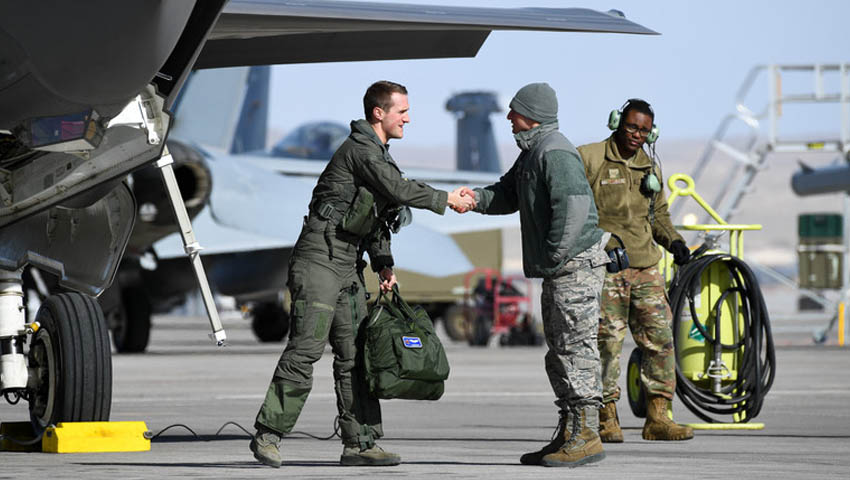The latest F-35A equipped squadron of the US Air Force, the 421st Fighter Squadron, is bringing the fifth-generation fighter to its first Red Flag exercise, revealing the seamless operation of pilot and machine.
The exercise, which takes place from 27 January to 15 February, is meant to give at least 10 combat-representative sorties to younger pilots to better prepare them for real combat against very capable adversaries.
The 421st Fighter Squadron is the most recent squadron to transition to the F-35A in the 388th Fighter Wing.
US Air Force Lieutenant Colonel Richard Orzechowski, Commander of the 421st Fighter Squadron, said, "We are the newest squadron, with the least amount of experience, who stood up the fastest.
"We have a fairly high ratio of pilots with limited F-35 experience, including some who have never flown another platform. Flying in a large force exercise is a valuable learning experience for them."
During Red Flag, a friendly “blue force” fights against an enemy “red force” in what is the Air Force's premier large-force combat-training experience, including air, space, cyber and intelligence operations.
For the young pilots, their main challenge takes place in the mission-planning and briefing rooms. Then during the missions over the Nevada Test and Training Range, which is bristling with surface to air threats and covered by an integrated air defence system and aggressor aircraft flown by some of the best pilots in the world.
"They have about a 10-hour mission planning day. They sit down with all the other assets and figure out how to best tackle the mission scenario. The mission execution day is about 15 hours, with briefings and debriefings following the mission," Lt Col Orzechowski said.
Most often, the mission of the 421st is to take the F-35A into very dangerous, high-threat environments where older, less stealthy aircraft cannot survive, let alone win.
"Because of our low-observability and the high level of battlespace awareness that our pilots have in the F-35A, we are often asked to go in and take out complex surface threats or systems and protect other aircraft from high-end air-to-air fighters," Lt Col Orzechowski explained.
"The F-35 also has an extremely high level of battlefield awareness and can pass that information to other F-35s anywhere in the fight without any pilot interaction. In terms of the amount of information, think fibre-optic versus dial-up internet. That’s a huge advantage."
For Captain Chris Shannon, his first time flying the F-35A at Red Flag has been both an education and a confidence boost in the lethality of his jet and his fellow airmen.
"My confidence in our tactics, our aircraft’s capabilities, and our level of preparation have grown with each mission. In the F-35 community, we take tremendous pride in our ability to make other platforms more survivable and more lethal. It’s a great feeling to escort other aircraft and suffer zero losses from counter-air. Allowing them to focus on their primary mission, knowing we have their back – That’s a great feeling," Capt Shannon explained.
The active-duty 388th Fighter Wing and Air Force Reserve 419th Fighter Wing are the Air Force's first combat-capable F-35A units. They fly and maintain the jet in a Total Force partnership, which capitalises on the strength of both components.

 Login
Login







